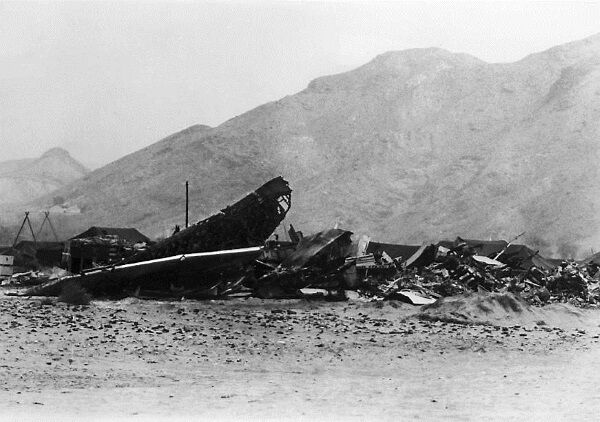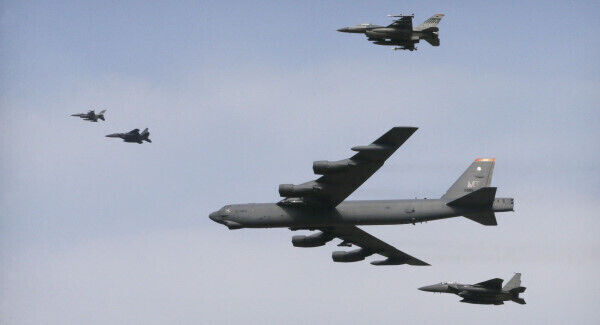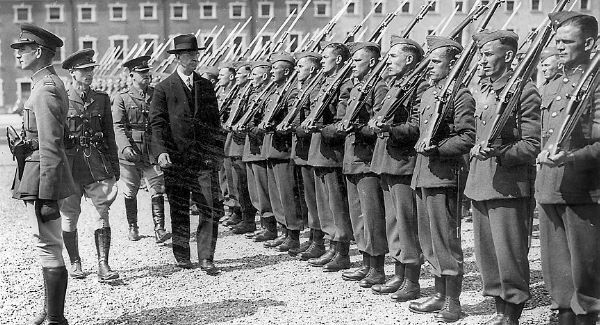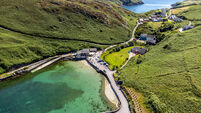The day a ‘H-bomb’ floated ashore in Cork

LITTLE of interest happened in East Cork without the late Willie Cox being among the first to hear about it. He was a veteran newsman based in Midleton and had contacts all over the region.
It was not surprising one of those contacts should have telephoned him when “a strange looking yoke” was washed ashore in Ballycotton on February 17, 1966.
Within the hour, Willie Cox and I had arrived in Ballycotton and were standing on the foreshore beside the torpedo-like object, which was about 12ft in length.
It had fins on the tail and mid-body and these were covered in weeds that were not familiar to local fishermen.
But it was the sight of an indicator handle beneath a US military marking which caused concern. For it carried the instruction that it was to be turned one way to arm and the other way to disarm.
And so began a spate of rumours that linked the harbour community with a nuclear bomb missing off the coast of Spain.
Tensions between the United States and the Soviet Union were high at the time. Both military powers were on alert.
America alone had between 12 and 24 nuclear-armed B-52 bombers flying around the clock on top secret missions in an attempt to deter a nuclear first-strike by the Soviets.
One of those bombers flew in a loop from a base in North Carolina and across the Atlantic to the Mediterranean and the borders of the Soviet Union on January 17 — nearly six weeks before the Ballycotton discovery.
A tanker aircraft took off from a base in southern Spain to refuel the bomber in mid-air before the return journey to the US.

The planes collided and crashed during the routine re-fuelling at 31,000ft, accidentally dropping four hydrogen bombs near Palomares in southern Spain.
Each bomb had 70 times the destructive power of the device dropped on Hiroshima. None of the bombs was armed and mercifully there was no nuclear blast that could have obliterated part of Europe.
But conventional explosives in two of the weapons that fell to the earth exploded on impact and scattered radioactive plutonium over a large area. The third bomb landed in a dry riverbed and was recovered relatively intact. The fourth fell into the sea and was missing.
All four crewmen on the refuelling plane died. Three of the seven men on the B-52 were killed. The four others managed to eject safely. There were no fatalities on the ground.
America deployed a dozen aircraft, nearly 40 ships, including some from the Sixth Fleet, submarines, and the latest in technology to try and find the bomb.

But despite that exhaustive search, which eventually cost $10m, there was still no sign of the H-bomb after almost six weeks.
And that was the position when the strange object was washed ashore in Ballycotton, sparking an immediate probe by the gardaí and Defence Forces.
Speculation was rife that it was the lost H-bomb.
Local residents were warned to keep a safe distance from the foreshore, which was sealed off and secured by the army.
Defence minister Michael Hilliard said objects which come ashore could be potentially dangerous. It was incumbent on the military authorities to take the necessary precautions to safeguard life and prevent damage to property.
The indicator on the object at Ballycotton pointed to “arm”. And it was not safe to let anyone near it until it was moved to “disarm”, a task which the army performed, he said.
Colonel Bradford Butler, the US miltary attache in Dublin, discounted any link with the missing H-bomb in Spain, explaining the device was a type of navy communications buoy and was harmless.
“The whole thing threw us all out and it took us quite a while to identify the object. We assumed that the mention of arm or disarm referred to explosives but later it transpired that it merely referred to activating electrical equipment inside,” he said.
The device, which may have been dropped from the air into the sea to detect the passage of submarines and transmit data by radio, was removed to Collins Barracks in Cork.

It was reported to have been worth £30,000, a huge sum 50 years ago.
A spokesman for the US navy in London said the “sinister looking” device was not a missile and was definitely not dangerous, but the Irish army acted correctly. “If you don’t know what a thing is, it is always wise to treat it with caution,” he said.
Five days after it was washed ashore, the buoy was transported in a truck with a military escort from Collins Barracks to Cork Airport. It was put on board a US navy Dakota aircraft and flown to Prestwick, close to Holy Loch, the Polaris nuclear submarine base in Scotland.
As the people of Ballycotton relaxed after the scare, the search continued off the Spanish coast for the missing H-bomb.
It was eventually located by a mini-sub on April 7, 1966 — 80 days after the US planes collided. It was recovered from the sea, damaged but intact.
US and Spanish security forces cleaned up the debris, decontaminated the land area, and fenced it off. Some 1,400 tonnes of radioactive soil and vegetation were shipped to the United States for disposal.
But concerns about radiation levels in the soil resurfaced in recent years. These led last October to the US signing a statement of intent to assist Spain in finishing the clean-up of the crash site.
The incident has largely faded into folklore in East Cork, but some older residents still remember the day their community was briefly linked, however tenuously, with the Cold War and the nuclear weapons that defined it.















